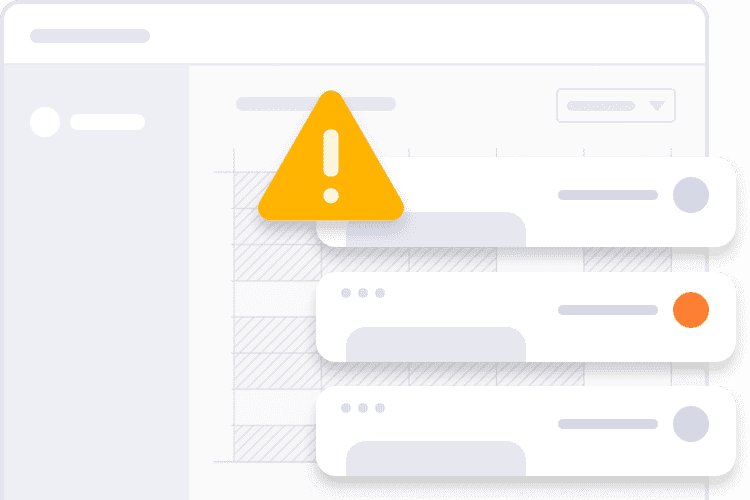Technical Infrastructure and How It Works
Natural Language Processing (NLP) and Understanding (NLU)
At the core of the chatbot's functionality are Natural Language Processing (NLP) and Natural Language Understanding (NLU) technologies. These enable the chatbot to comprehend the natural language queries of users and interpret their context accurately. NLP analyzes the structure of language to help the chatbot provide relevant answers, while NLU determines the user’s intent. For instance, when a user asks, “Where is my order?”, the chatbot understands that the user is inquiring about the status of their order and responds with the appropriate information.
Machine Learning and Continuous Improvement
To enhance the chatbot's intelligence and personalization, machine learning (ML) and deep learning algorithms are employed. The chatbot continuously learns from its interactions with users, improving its accuracy and speed over time. For example, the chatbot can learn from frequently asked questions and begin to answer them more efficiently. Through machine learning, the chatbot can analyze user habits and preferences, improving its recommendation capabilities.
Personalization and Modular Structure
The AI-powered chatbot features a modular structure that can be customized to suit the needs of each customer. Different modules, such as customer service, sales support, order management, and product recommendations, can be added or removed based on requirements. This flexibility allows each business to tailor the chatbot’s capabilities to their specific needs. For example, one customer may only need the chatbot for customer service, while another may expand its functionality to include payment processing.
Instant Response and Multi-Platform Support
One of the key advantages of an AI-powered chatbot is its ability to provide instant responses. When users ask questions, the chatbot delivers immediate answers, enhancing the customer experience. Additionally, the chatbot operates seamlessly across multiple platforms such as websites, mobile apps, and social media platforms (WhatsApp, Facebook Messenger, Telegram). This multi-platform support ensures that customers enjoy a consistent experience, regardless of how they interact with the chatbot.
Capabilities and Functionality
Customer Service and FAQ Support
The AI-powered chatbot automates customer service processes by answering frequently asked questions and handling routine inquiries such as order status, returns, and product information. By reducing the workload on human customer service agents, the chatbot enhances efficiency and improves response times.
Sales Support and Product Recommendations
The chatbot offers personalized product recommendations to users, making the shopping experience more interactive. Based on previous purchases, product preferences, or search history, the chatbot can suggest relevant products. Additionally, the chatbot’s dynamic recommendation algorithms allow users to compare products, stay informed about discounts, and learn about ongoing promotions.
Order and Operational Management
Customers can track their orders, complete payment processes, and submit return requests through the chatbot. Particularly in e-commerce environments, the chatbot’s order management capabilities streamline the shopping process, helping users resolve issues quickly and efficiently.
Multi-Step Dialogues and Complex Process Management
The chatbot can guide users through complex processes, such as multi-step shopping journeys. By providing step-by-step guidance and information, the chatbot helps users complete transactions. It can handle more complex dialogues, such as product comparisons, payment processing, and offering various options to the user.
Personalized Campaigns and Special Offers
The chatbot can offer personalized campaigns and discounts based on user behavior and preferences. By recommending products tailored to the user’s interests, the chatbot increases conversion rates. Additionally, the chatbot can notify users about exclusive promotions and deals, keeping them engaged and informed.
Multi-Language Support and Global Accessibility
The chatbot offers multi-language capabilities, allowing users from different countries and regions to interact seamlessly in their native languages. This ensures a personalized experience and enhances accessibility for an international audience.
Integration and Flexibility

CRM Integration and Personalized Services
The chatbot integrates with CRM systems, allowing it to deliver personalized services based on a customer’s past interactions and purchase history. For example, if a customer has previously bought a specific product, the chatbot can provide them with related services or recommendations.
ERP and Payment System Integration
The AI-powered chatbot can integrate with ERP systems and payment platforms to provide users with real-time stock availability, order status updates, and payment information. This integration enables customers to complete their purchases and manage orders directly through the chatbot.
Omni-Channel Support
The chatbot is not limited to websites but can be deployed across social media, mobile apps, and other digital platforms. Regardless of the platform, the chatbot provides consistent responses and quality service.
Data Privacy and Security

User Data Security
The chatbot operates according to the highest security standards, ensuring the safe processing and storage of user data. This includes encryption and other security measures to protect customer information, such as personal details and payment data. The chatbot complies with regulations like GDPR to ensure data privacy.

Transparent Data Management
Being transparent about how user data is processed enhances the chatbot’s trustworthiness. Users can learn what data the chatbot uses and adjust privacy settings according to their preferences.
Usage Advantages
The Key Advantages Chatbots Offer to Businesses and Users
Cost Savings and Efficiency Increase
Chatbots provide 24/7 service, quickly responding to customer demands and reducing operational costs by minimizing the need for human labor.
Scalability
During peak times, chatbots enable simultaneous interactions with multiple customers, ensuring uninterrupted service continuity and improving the customer experience.
Continuous Learning and Improvement
Through machine learning, chatbots learn from interactions, enhance their capabilities, and provide faster and more accurate responses over time.
Real-Time Reporting and Analysis
By collecting data from user interactions, chatbots generate reports, offering performance measurement and opportunities for service improvement.

Analysis and Feedback

Performance Tracking and KPIs
The chatbot's performance can be continuously improved by analyzing user feedback and interactions. KPIs (Key Performance Indicators) such as response time, satisfaction rate, and resolution rate can be monitored to optimize the chatbot's performance.

Surveys and User Feedback
By collecting real-time feedback from users, the chatbot can identify areas that need improvement. This feedback is used to enhance the chatbot's ability to provide better answers and increase user satisfaction.
Sector-Specific Use Cases
Chatbot Advantages in E-commerce
Chatbots reduce costs with instant responses, enhance customer satisfaction, and increase sales conversion rates through personalized product recommendations. They strengthen customer engagement during campaign periods.
Style Advisor in the Fashion Industry
Chatbots provide tailored suggestions based on users' styles and measurements, offer information about trends and discounts, and personalize the shopping experience with seasonal product matching.
Technical Support and Comparison in Electronics
Chatbots perform price and feature comparisons for electronic products, provide solutions to technical issues, and inform users.
Travel Reservations and Information
Chatbots simplify reservation processes, assist in travel planning, and improve user experience with destination details and additional suggestions.
Restaurant Reservations and Chatbots
Chatbots enable quick reservations for restaurant customers, menu reviews, and promotion notifications. They can provide information like special diet options or popular meal recommendations to personalize the customer experience.

Real Experiences, Real Successes
Our customers share the impactful results they have achieved with DeeperInCode. Discover how they transformed their operations with our innovative solutions.
Superb Experience!
As Osevio, we integrated an AI-powered search engine with DeeperInCode to enhance customer experience and boost our sales. Thanks to this solution, our users can quickly access the products they want, resulting in a 25% increase in our conversion rates.
Fast and Effective...
At Mediamarkt Turkey, we collaborated with DeeperInCode to optimize our campaign and tag management processes. This partnership allowed us to manage campaigns more quickly and efficiently, while also bringing visually appealing content to our customers. As a result, we achieved a 30% increase in our sales.
Simple and Easy to Use!
At Diyetasistan, DeeperInCode's customer engagement tools brought a big leap forward in user interaction. With the personalized feedback feature, it became easier for customers to provide valuable input, significantly enhancing customer satisfaction.









